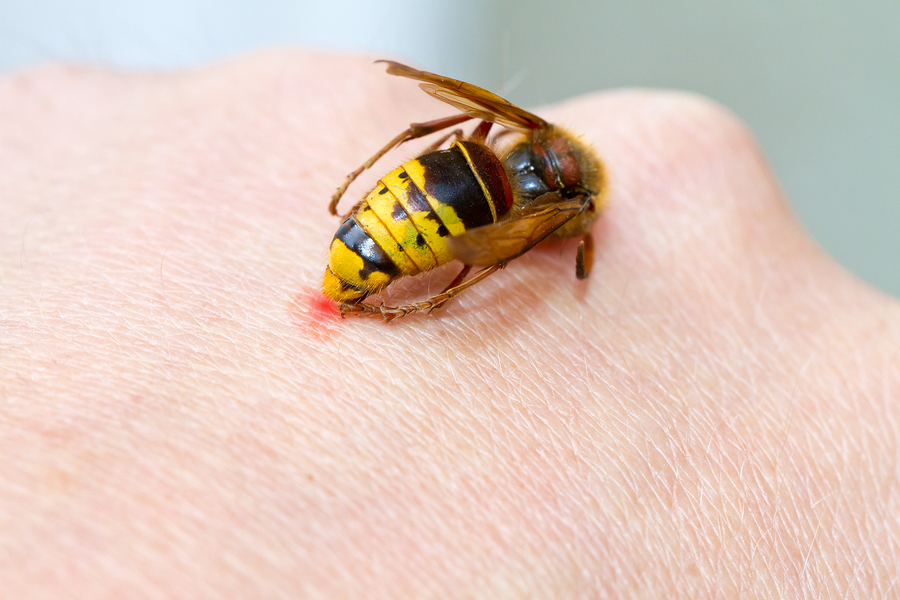READY TO GET STARTED?
REQUEST A FREE ESTIMATE
Fill out the form below or call (888) 466-7849 for a free, no-obligation estimate.

Just like the weather changes with each season, so do the pests that we see. Some pests prefer warmer weather and peak in spring and summer while other pests will surge in the winter as they come inside to get out of the cold. The ways that you prepare your home will depend on what time of year it is and what pests you are preparing for. We have provided you with a few of the most common pests for each season so you can be better prepared all year long.
Springtime brings about an increase in temperatures, the melting of ice, and the blooming of flowers. These warmer temperatures bring many pests out from their winter hiding places. As these animals emerge they will have one thing on their minds – food and water! Spring is also mating season for many species. Here are some common spring pests to look out for:
While we get somewhat of a break from pests in the summer months, there are a few species who peak during this hot season. Summer is typically the time in many pests’ life cycles where they are maturing and are less of a threat to humans. Here are some common summer pests:
Fall brings about cooler temperatures. This is the time of year when pests start to prepare for the upcoming winter. Many pests will start to seek warmth and shelter inside our homes. Here are some common fall pests:
While many pests hibernate or become dormant over the winter, don’t relax just yet! There are still many pests that we see in larger numbers in the winter months as they make their way into our home to avoid the harsh cold weather. Here are some common winter pests:
As you can see, no two pests are alike and no two seasons are alike. In the same manner, one universal pest control method won’t work for different pests or for different seasons. It is important to know which pests thrive during which seasons so that you can better prepare your home year round to prevent an invasion. If you suspect that you have a pest problem in your home, contact a professional pest control company who can provide you with a thorough evaluation and set you up with a comprehensive treatment plan.

With Spring only a few weeks away, now is a good time to start preparing for allergy season. And what’s one of the major causes of allergies and asthma? PESTS! Don’t suffer through the beautiful spring season this year. Here are some tips to keep your home pest and allergen-free.
Pest prevention measures can be very effective at combating allergies and asthma. Common household pests, like cockroaches and stinging insects, can pose a significant threat to asthma and allergy sufferers. Roach droppings, saliva, shed skins and other body parts contain allergen proteins known to cause flare-ups and increase asthma symptoms, especially in children. And stinging insects send more than 500,000 people to the emergency room each year due to serious reactions from the pest’s venom.
The first step to a pest and allergen-free home: practice good sanitation.
In addition, the National Pest Management Association (NPMA) recommends the following tips for safeguarding homes against common indoor allergens caused by pests:

School is almost back in session but summer is far from over here in the south. This means we have a few more months of summer pests to look forward to. Some of the most threatening: stinging pests. Yellowjackets, wasps, hornets and other common stinging insects can pose serious risks to our health and send more than half a million people to the emergency room every year, according to the National Pest Management Association. They often create painful stings and severe allergic reactions, and are likely lurking around outside, at BBQs, playgrounds, and pools. Minimize your risk by being aware. Here are the 4 most common stinging pests you should be on the lookout for.
1. Yellowjackets – Yellowjackets are distinguished by the black and yellow color pattern banded across their abdomens. They are territorial and may sting repeatedly if threatened.
2. European Hornets – European hornets are active at night. They have smooth stingers that carry venom known to cause itching, swelling and pain for about 24 hours. Like yellowjackets and wasps, European hornets can sting repeatedly during an attack.
3. Paper Wasps – Paper wasps are not an aggressive species by nature, but they will sting if their nest is threatened. Wasp stings are painful and can cause the same risk of allergic reaction as other insect stings.
4. Killer Bees – Africanized “killer” bees defend their colony and will attack in large numbers when threatened. However, they can only sting once as their stingers are barbed and tear off when trying to get away. Killer bees have been known to chase people for more than a quarter mile.
The best way to prevent an unwanted encounter is to exercise caution when outdoors. If you come in contact with a bee or wasp, do not swat it, as that may actually provoke an attack. Remain calm and the insect should fly away without causing harm. For bee infestations, contact your local pest control company.